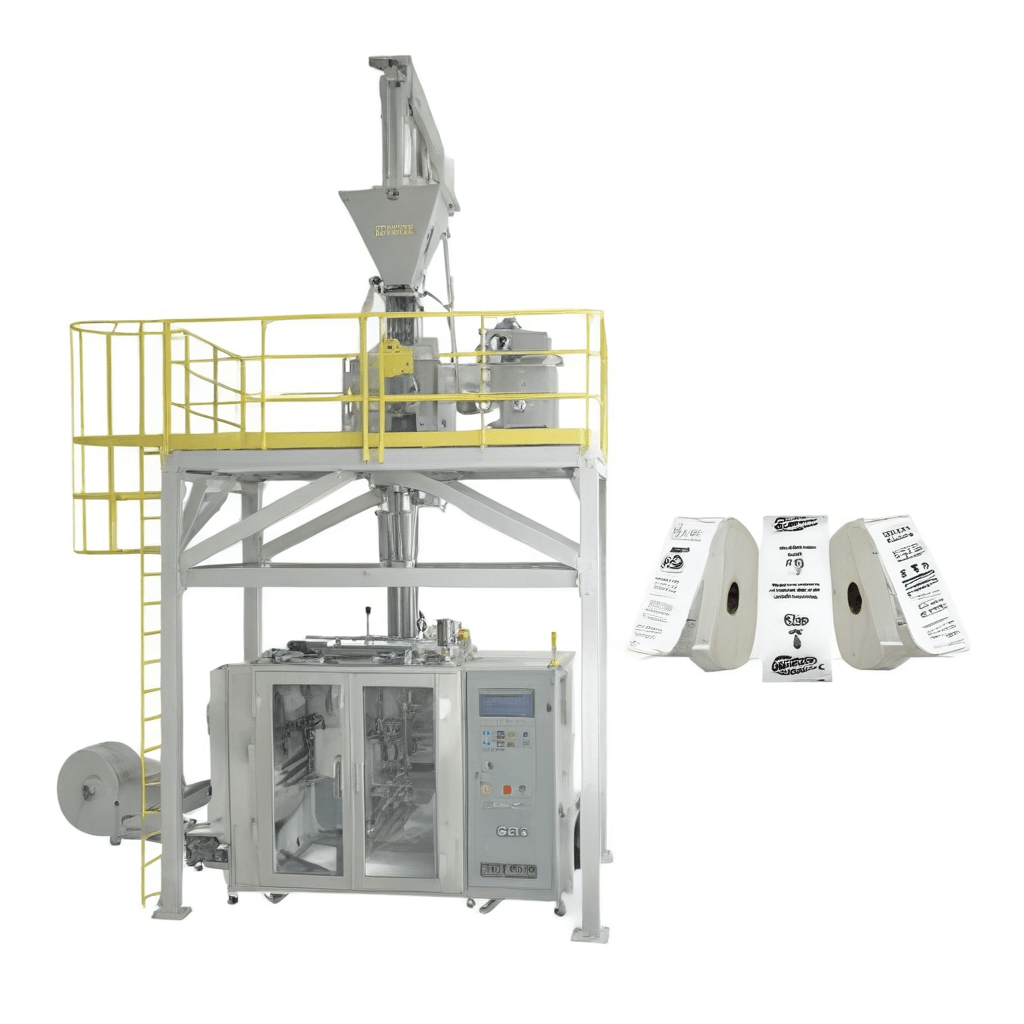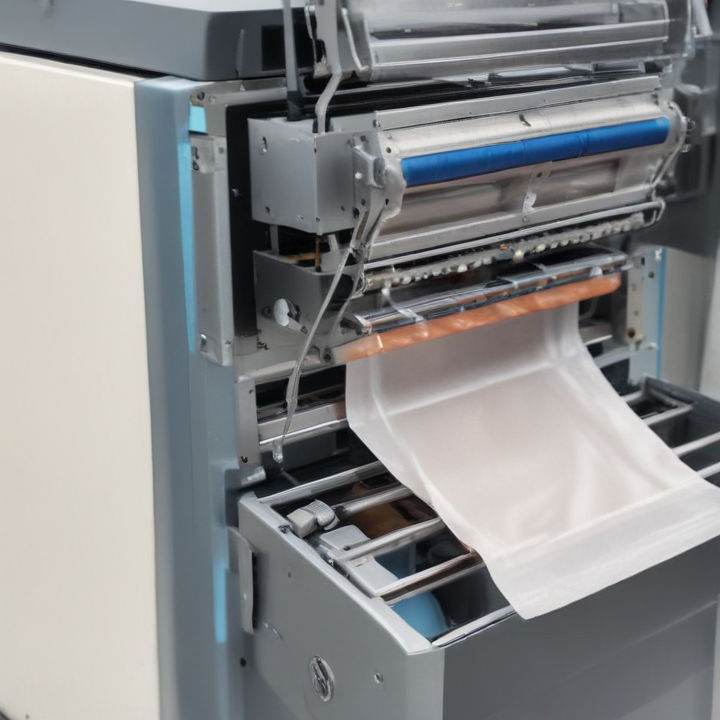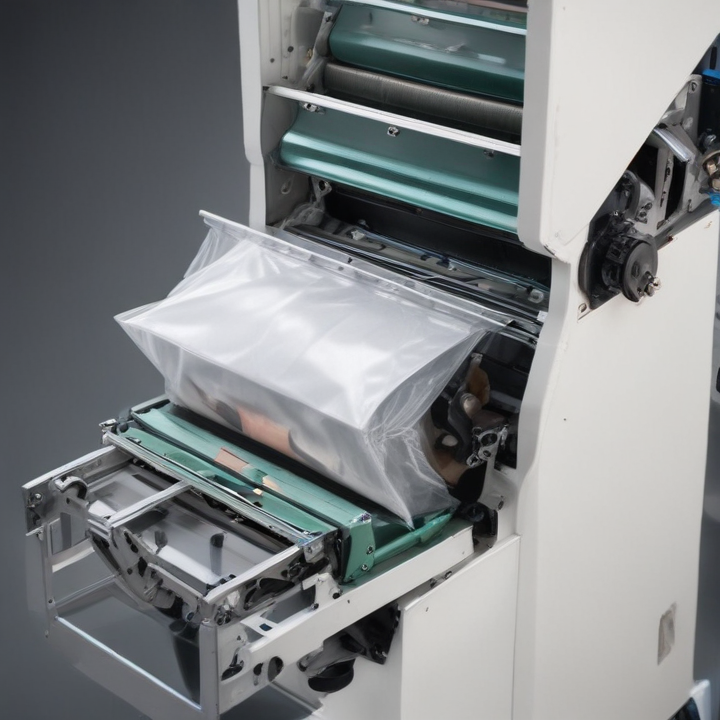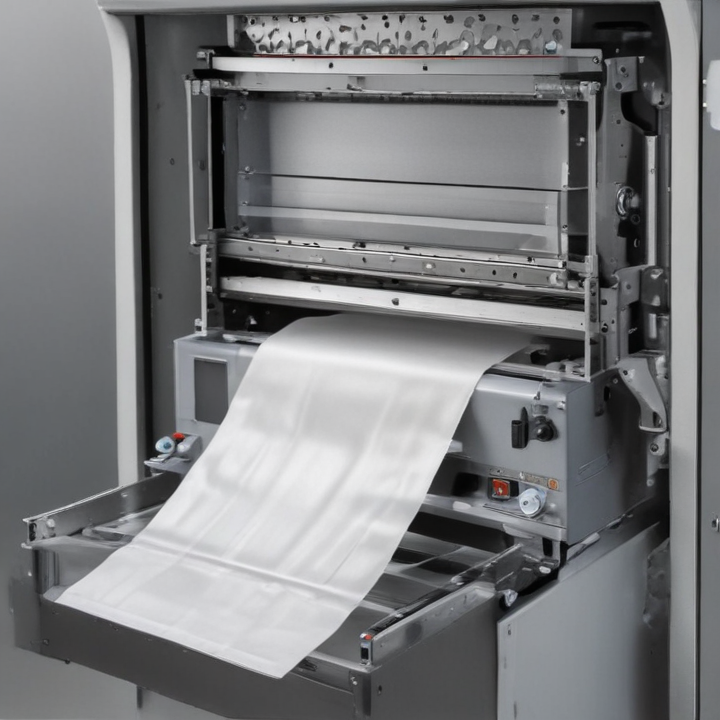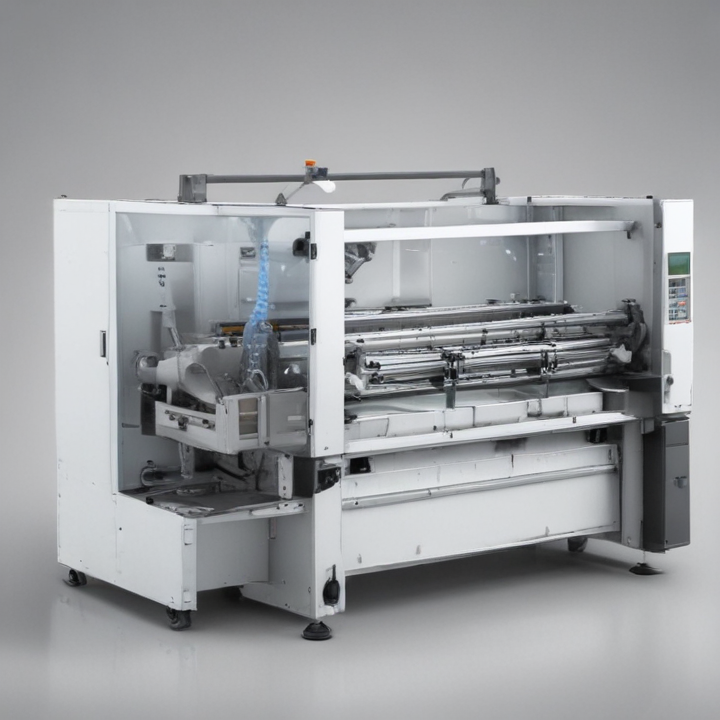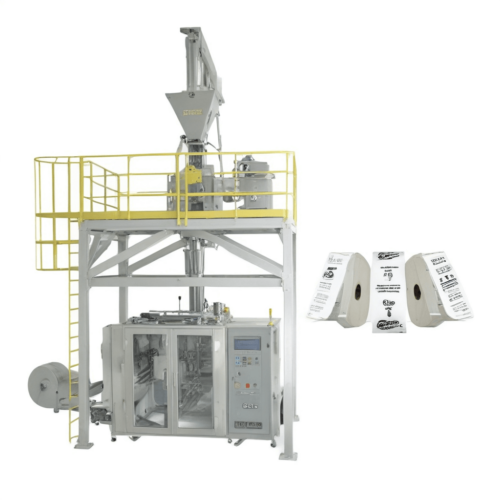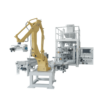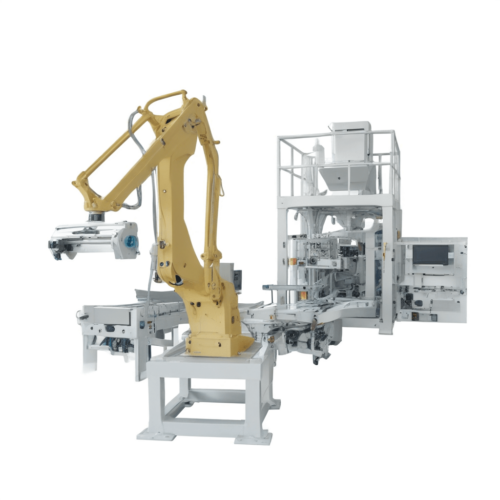List Technical Parameters of “automatic bagging machine”
An automatic bagging machine is designed for the efficient and streamlined packaging of products into bags. Its technical parameters can vary according to specific models and applications, but generally include the following:
1. Bagging Speed:
* Metric: Bags per minute (bpm)
* Typical Range: 10-60 bpm
2. Bag Dimensions:
* Width: Usually adjustable within a range, e.g., 100-500 mm
* Length: Customizable, typically between 150-1200 mm
3. Bag Types Compatibility:
* Pre-made bags
* Roll stock film for creating bags on-demand
* Specifics: Flat bags, gusseted bags, stand-up pouches
4. Weighing Accuracy:
* Tolerance: ±0.1% to ±0.5% of the target weight
* Load cells: Precision strain gauge load cells
5. Material Compatibility:
* Supports plastic, paper, foil, and biodegradable materials
6. Control System:
* PLC (Programmable Logic Controller)
* HMI (Human-Machine Interface), typically a touchscreen
7. Power Supply:
* Voltage: 220V/380V, 50Hz/60Hz
* Power consumption: Varies by model, typically 2-5 kW
8. Air Supply:
* Compressed air requirements: 5-8 bar
* Air consumption: approximately 0.5 – 1 m³/min
9. Sealing Type:
* Heat sealing
* Ultrasonic sealing
* Impulse sealing
10. Construction Materials:
* Stainless steel (SS304 or SS316) for frame and contact parts
* Options for food-grade materials
11. Operational Environment:
* Suitable ambient temperature: 0-40°C
* Humidity: 5-90% (non-condensing)
12. Optional Features:
* Remote connectivity for diagnostics and updates
* Multi-head weighers for faster and more accurate filling
* Integration with other equipment like conveyors and labelers
13. Dimensions and Weight:
* Size: Typically, 3000x900x2000 mm
* Weight: Around 500-1500 kg
14. Safety Standards:
* Compliance with CE, UL, or other relevant safety certifications
These parameters enable the automatic bagging machine to efficiently handle a variety of products and packaging needs.
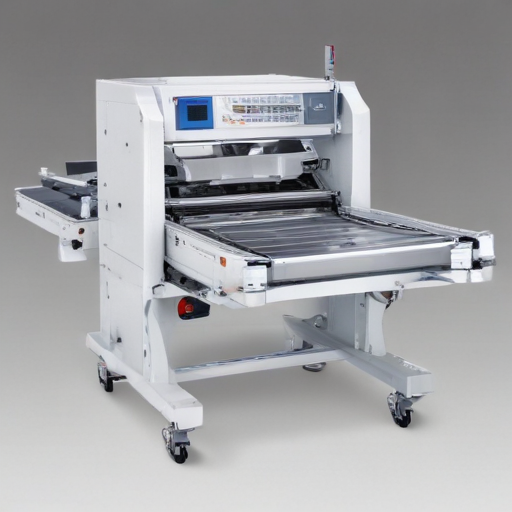
List Product features of “automatic bagging machine”
An automatic bagging machine is an advanced piece of equipment designed to streamline the packaging process. Here are its key product features:
1. High-Speed Operation: Capable of processing large quantities rapidly to improve productivity.
2. Versatile Bagging Options: Accommodates various bag types and sizes, including pre-made bags, pouches, and roll stock.
3. User-Friendly Interface: Equipped with intuitive touchscreens for easy operation and programming.
4. Automated Weighing and Filling: Integrated weighing and filling systems ensure accurate, consistent fills.
5. Precision Sealing Technology: Ensures airtight and secure sealing, extending product shelf-life.
6. Customizable Settings: Adjustable settings for different products and bagging requirements.
7. Durable Construction: Built from high-quality materials for longevity and reliability in industrial environments.
8. Safety Features: Includes safety guards and emergency stop switches to protect operators.
9. Minimal Downtime: Quick-change components and easy maintenance procedures to minimize downtime.
10. Energy Efficiency: Designed to use less power without compromising performance.
11. Data Integration Capabilities: Integration with ERP and other data management systems for seamless operation tracking and inventory management.
12. Compact Design: Space-efficient design maximizes floor space usage.
13. Low Noise Operation: Advanced engineering to ensure quiet operation, reducing noise pollution in the workspace.
14. Remote Monitoring and Control: Options for remote access and monitoring to manage operations offsite.
15. Error Detection Systems: Automatic error detection and alerts to avoid bagging defects.
16. Eco-Friendly Options: Compatible with biodegradable and recyclable packaging materials.
17. Scalability: Modular designs allow the addition of components as needed for scaling up operations.
18. Compliance with Standards: Meets industry standards for hygiene and safety, suitable for food, pharmaceuticals, and other sensitive sectors.
This robust feature set makes automatic bagging machines an essential asset for businesses aiming to enhance packaging efficiency, accuracy, and overall productivity.
List Application of “automatic bagging machine”
Automatic bagging machines are versatile and widely used across various industries to improve efficiency, reduce labor costs, and ensure consistent packaging quality. Below are some key applications:
1. Food and Beverage Industry:
– Grains and Cereals: Packaging rice, wheat, oats, and other grains.
– Snacks and Confectioneries: Chips, nuts, candies, and chocolates.
– Beverages: Filling and sealing tea, coffee, and powdered drink mixes.
2. Agriculture:
– Seeds: Efficiently packaging different types of seeds.
– Fertilizers: Bagging chemical and organic fertilizers for easy transport and application.
– Feed: Animal feed and supplements can be quickly packed.
3. Pharmaceuticals and Healthcare:
– Medicines: Packaging of bulk drugs, tablet packs, and powdered medications.
– Medical Supplies: Bandages, cotton swabs, and other medical disposables.
4. Chemical Industry:
– Powders and Granules: Packaging industrial chemicals, adhesives, and cleaners.
– Pesticides and Insecticides: Ensuring safe and secure packaging of hazardous materials.
5. Building and Construction:
– Cement and Sand: Bagging bulk materials for construction.
– Adhesives and Sealants: Packaging products used in building and renovation.
6. Retail and Consumer Goods:
– Paper Products: Packing napkins, tissues, and paper towels.
– Household Items: Detergents, soaps, and other cleaning products.
7. Mining and Minerals:
– Ores and Minerals: Efficiently packaging extracted raw materials for transport and processing.
8. Animal and Pet Care:
– Pet Foods and Supplies: Bagging pet foods, litter, and other supplies.
9. Textiles:
– Garments and Fabric: Packaging clothing items, textiles, and fabric rolls.
Overall, automatic bagging machines play a crucial role in speeding up the packaging process, reducing wastage, and ensuring product consistency, making them indispensable across a wide range of industries.
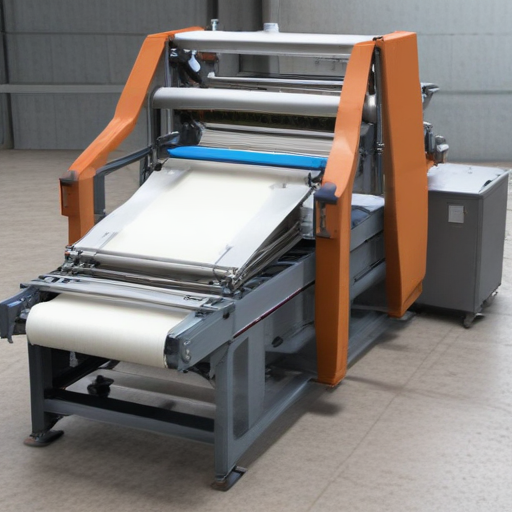
List Various Types of “automatic bagging machine”
Automatic bagging machines are essential in various industries for packaging goods efficiently and consistently. Here are some types:
1. Vertical Form Fill Seal (VFFS) Machines:
– Application: Commonly used for granular products, powders, and small pieces.
– Features: Forms bags from a flat roll of film, fills them, and seals them vertically.
2. Horizontal Form Fill Seal (HFFS) Machines:
– Application: Ideal for packaging solid items, such as biscuits, and other snack foods.
– Features: Works horizontally to create bags from roll stock, fill them, and seal.
3. Pouch Filling Machines:
– Application: Used for pre-made pouches, suitable for liquids, pastes, and granular products.
– Features: Fills pre-made pouches with the product and seals the top.
4. Automatic Weighing and Bagging Machines:
– Application: Best for products that require precise weight measurements, such as grains and seeds.
– Features: Weighs the product, fills the bag, and seals it.
5. Net Weighers:
– Application: Used for free-flowing products where weight accuracy is critical.
– Features: Weighs products before bagging, usually in an overhead bin, then fills and seals the bag.
6. Valve Bag Fillers:
– Application: Suitable for powders and granular bulk products like cement, chemicals, and fine powders.
– Features: Bags are filled using a spout that seals around the valve of the bag.
7. Open Mouth Bagging Machines:
– Application: Used for bulkier items requiring open-mouth bags such as animal feed and soil.
– Features: Bags are manually placed on the spout and automated systems do the filling and sealing.
8. Tea Bag Packaging Machines:
– Application: Specifically designed for filling and sealing tea bags.
– Features: Often includes functions for attaching strings and tags.
9. Shrink Wrap Bagging Machines:
– Application: Packaging products with shrink film to protect and secure items.
– Features: Uses heat to shrink the film tightly around the product.
Each type caters to different packaging needs based on product characteristics and industry requirements.
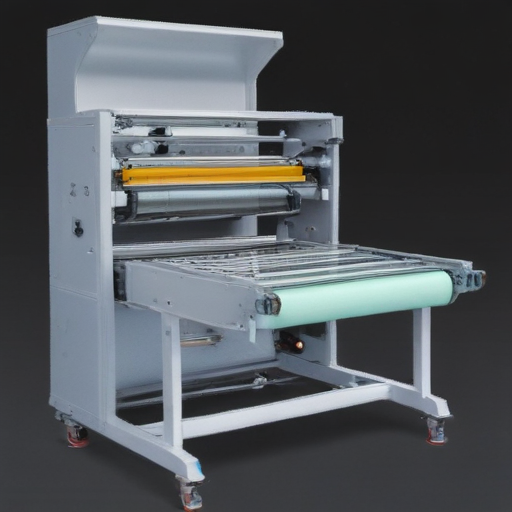
Custom Manufacturing Options for automatic bagging machine
Custom manufacturing options for an automatic bagging machine can greatly enhance efficiency, reliability, and adaptability to specific needs. Here are key customizable features:
1. Bag Types:
– Polyethylene, polypropylene, or paper bags: Depending on the product and industry requirements.
– Pre-made bags or roll stock: Tailor the machine for pre-formed bags or create bags in-line from roll stock.
2. Bag Sizes and Capacities:
– Customizable dimensions for various weight capacities, from small pouches to large sacks.
– Adjustable filling volumes to handle different product weights and sizes.
3. Feed Systems:
– Conveyors, vibratory feeders, or augers: To suit different product consistencies (granular, powder, liquid).
– Multi-head weighers for precise portioning.
4. Sealing Methods:
– Heat Sealing: Ideal for plastic and some laminated films.
– Sewing Heads: For paper or woven polypropylene bags.
– Ultrasonic Sealing: For specialized applications requiring strong, leak-proof seals.
5. Printing and Labeling:
– Integration with thermal transfer printers or inkjet systems for on-the-fly printing.
– Label applicators for adding custom labels detailing product specs, barcodes, or branding.
6. Inspection Systems:
– Metal detectors and X-ray systems to ensure product safety.
– Vision systems for verifying fill levels, label placement, and seal integrity.
7. Automation Integration:
– Robotic arms for bag placing, palletizing, or other handling requirements.
– Connectivity with enterprise systems for real-time monitoring and data collection.
8. Control Systems:
– Customizable PLCs (Programmable Logic Controllers) and HMIs (Human Machine Interfaces) for ease of operation and troubleshooting.
9. Material Handling:
– Customized infeed and outfeed conveyors.
– Specialized hoppers or bins to manage product flow.
Tailoring these features to your specific operation can optimize productivity, reduce waste, and enhance overall system performance.
List Quality Control and The Manufacturing Process of “automatic bagging machine”
### Quality Control of Automatic Bagging Machine
1. Incoming Material Inspection:
– Verify the quality of raw materials and components from suppliers to ensure they meet the required specifications.
2. In-Process Inspections:
– Conduct regular checks during assembly to detect and rectify issues early.
– Inspect welding, machining, and electrical components for proper assembly and alignment.
3. Functional Testing:
– Perform rigorous operational testing to verify machine functionality and performance under different conditions.
– Test for accuracy in bagging, speed, and consistency.
4. Safety and Compliance Checks:
– Ensure the machine meets all safety regulations and certifications.
– Test emergency stop functions and safety interlocks.
5. Final Inspection:
– Conduct a thorough inspection of the finished machine, including aesthetic checks and final calibration.
– Verify that all components are functioning correctly and that the machine meets customer specifications.
6. Documentation Review:
– Ensure all quality control procedures are documented, and test results are recorded.
– Provide detailed manuals and user guides to the customer.
### Manufacturing Process of Automatic Bagging Machine
1. Design and Engineering:
– Develop detailed schematics and 3D models.
– Finalize design specifications based on functionality and customer requirements.
2. Material Procurement:
– Source high-quality raw materials and components.
– Establish relationships with reliable suppliers to ensure consistency.
3. Component Fabrication:
– Use CNC machines, laser cutters, and welding equipment to fabricate components.
– Perform quality checks on each part before assembly.
4. Assembly:
– Assemble the machine in phases, integrating mechanical, electrical, and software components.
– Use precision tools and fixtures to ensure accuracy.
5. Programming and Integration:
– Develop and upload control software; integrate with hardware.
– Conduct debugging and initial functionality tests.
6. Testing and Calibration:
– Calibrate sensors and actuators for optimal performance.
– Perform extensive functional and safety tests under simulated operational conditions.
7. Finishing and Packaging:
– Apply any required protective coatings or surface finishes.
– Package the machine securely for transportation.
8. Shipping and Installation:
– Arrange for shipping and delivery.
– Provide on-site installation and training for customer staff.
Adhering to these quality control and manufacturing steps ensures that the automatic bagging machine meets high-performance standards and customer satisfaction.
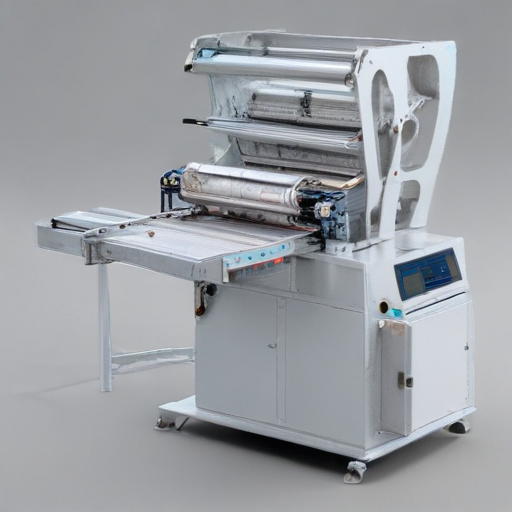
How to use “automatic bagging machine”
Using an automatic bagging machine is straightforward and efficient. Here’s a basic guide:
1. Setup:
– Position the Machine: Place the machine on a stable surface with adequate space for operation.
– Power On: Connect the machine to a power source and turn it on.
2. Load Materials:
– Load Bags: Place the empty bags in the designated bag magazine or holder.
– Fill Hopper: Ensure the hopper is filled with the product material to be bagged.
3. Settings Configuration:
– Set Parameters: Adjust the machine settings for bag size, fill weight, and sealing preferences using the control panel. This may vary based on the machine model.
4. Calibration:
– Test Run: Perform a test run to calibrate the fill weight and ensure accuracy.
– Adjust Settings: Fine-tune settings if necessary to achieve the desired fill and seal.
5. Operation:
– Automatic Mode: Switch the machine to automatic mode. The machine will start feeding, filling, and sealing bags continuously.
– Monitor: Keep an eye on the process to ensure everything runs smoothly.
6. Maintenance:
– Regular Cleaning: Clean the machine regularly to avoid blockages or contamination.
– Routine Checks: Inspect the machine periodically for wear and tear or any required repairs.
7. Safety:
– Follow Safety Protocols: Wear appropriate protective gear and follow the manufacturer’s safety guidelines.
– Emergency Stop: Be aware of the emergency stop button’s location for immediate shutdown if needed.
Every machine may have specific instructions, so always refer to the user manual for detailed guidance. Proper use and maintenance will ensure optimal performance and longevity of your automatic bagging machine.
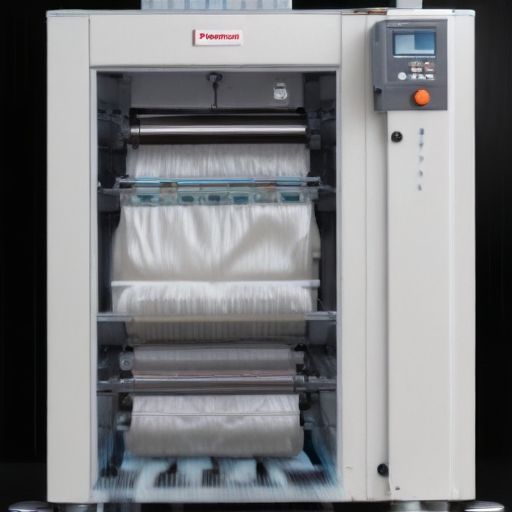
List Properties and Terms of “automatic bagging machine”
An automatic bagging machine streamlines the process of filling and sealing bags with various products. These machines are integral in industries such as food, pharmaceuticals, agriculture, and chemicals. Key properties and terms associated with automatic bagging machines include:
### Properties:
1. High Efficiency: Capable of filling and sealing numerous bags per minute, minimizing downtime and maximizing production rates.
2. Precision: Advanced sensors and controls ensure accurate weight and fill levels, reducing product wastage.
3. Versatility: Suitable for a wide range of products, including powders, granules, and liquids.
4. Durability: Crafted from robust materials (often stainless steel) to withstand harsh industrial environments.
5. Automation: Incorporates PLCs (Programmable Logic Controllers) and HMI (Human Machine Interface) for seamless operation and ease of control.
### Terms:
1. Filling Mechanism: Various methods (gravity, auger, vacuum) used to fill bags depending on the product type.
2. Sealing Technology: Various sealing methods such as heat sealing, ultrasonic sealing, or adhesive sealing.
3. Bag Types: Compatibility with different bag types including flat bags, pillow bags, gusseted bags, and stand-up pouches.
4. Throughput Rate: The number of bags processed per minute, indicating the machine’s productivity.
5. Weight Calibration: Ensures consistent and precise filling by calibrating scales or augers.
6. Batch Coding/Labeling: Options for printing batch numbers, expiration dates, or barcodes directly on the bags.
7. Feeding System: Hopper, conveyor belt, or other mechanisms used to transport the product to the filling station.
8. Bagging Speed: Adjustable speed controls to accommodate different production requirements.
9. Safety Features: Guarding, emergency stop, and other protective measures to ensure operator safety.
10. Maintenance Friendly: Easy access to components for cleaning, repair, and routine maintenance.
These properties and terms encompass the fundamental aspects required for understanding the functionality and utility of an automatic bagging machine.
List The Evolution history of “automatic bagging machine”
The evolution of the automatic bagging machine has been driven by advancements in technology, materials, and industry demands.
1. Early 20th Century: The first basic bagging machines began to appear, primarily operated manually and partly mechanized, focusing on agricultural products such as grains and flour. These early systems introduced efficiency over entirely manual processes.
2. Mid 20th Century: Post-World War II, industrial growth accentuated the need for more automation. Mechanical bagging machines started to become more sophisticated, using pneumatic and hydraulic systems to automate filling and sealing processes. Companies like Hayssen and Bosch expanded the technology.
3. 1970s-1980s: Development of electronic controls and microprocessors allowed for greater precision and versatility. PLCs (Programmable Logic Controllers) became integral in automating tedious tasks, improving speed, and ensuring accuracy. Bagging machines became multifunctional, capable of handling various bag types and products.
4. 1990s: Advancement in digital technology and sensor integration further enhanced machine capabilities. New materials and sealing techniques (like heat-sealing) improved packaging quality and shelf-life of products.
5. Early 2000s: Enhanced user interfaces and software allowed easier operation and monitoring. Automated systems integrated with enterprise resource planning (ERP) systems for better workflow management. Robotics began to be incorporated for tasks such as palletizing.
6. 2010s: The rise of Industry 4.0 saw smart bagging machines with IoT (Internet of Things) capabilities, enabling real-time data collection and remote monitoring. Automation became more adaptive, with machines capable of handling a wider range of product types and packaging formats with minimal human intervention.
7. 2020s and Beyond: Continued advancements focus on sustainability, energy efficiency, and the use of AI and machine learning to predict maintenance needs and optimize operations. The trend is towards fully integrated, intelligent systems that streamline production flows and reduce waste.
Throughout its evolution, the automatic bagging machine has continually adapted to meet the increasing demands for efficiency, precision, and sustainability in industrial packaging.
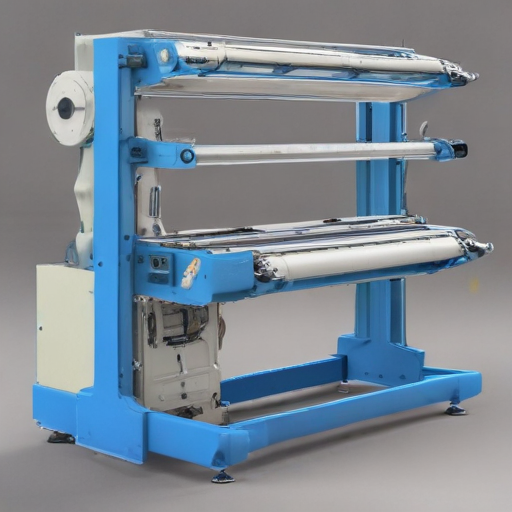
How to Select a Reliable automatic bagging machine
Selecting a reliable automatic bagging machine involves several crucial considerations to ensure efficiency, durability, and suitability for your specific needs. Here are some key steps to guide your decision:
1. Define Your Requirements: Determine the type of products you’ll bag (powder, granules, liquids, etc.), the bag size and material, and the desired production rate. Clarifying these needs helps in choosing a machine that matches your specifications.
2. Quality and Durability: Choose machines made from high-quality, durable materials to withstand long-term use. Stainless steel is often preferred for its corrosion resistance and longevity.
3. Technology and Features: Look for advanced features such as touch-screen controls, adjustable settings, and compatibility with various bag types. Machines with modern technology can enhance productivity and flexibility.
4. Manufacturer Reputation: Research the reputation of potential manufacturers. Look for companies with a proven track record, positive customer reviews, and strong after-sales support. Reputable brands are more likely to offer reliable and efficient machines.
5. Ease of Maintenance: Opt for machines that are easy to clean and maintain. Simple and accessible maintenance routines minimize downtime and extend the machine’s life.
6. Safety Standards: Ensure the machine complies with relevant safety standards and certifications. Safety features protect operators and reduce the risk of accidents.
7. Budget Considerations: While staying within budget is important, avoid compromising on quality. Sometimes, investing a bit more upfront in a high-quality machine saves costs in the long run due to fewer breakdowns and repairs.
8. Trial and Demonstration: If possible, request a trial run or demonstration. Observing the machine in action can provide insights into its performance, speed, and ease of use.
9. Customer Support and Training: Ensure the manufacturer offers comprehensive training and reliable customer support. Proper training for your staff and timely technical assistance can significantly enhance productivity and machine longevity.
By carefully evaluating these factors, you can select a reliable automatic bagging machine that meets your needs and delivers long-term value.
List “automatic bagging machine” FAQ
### Automatic Bagging Machine FAQ
1. What is an automatic bagging machine?
An automatic bagging machine is a device designed to automatically fill and seal bags with various products such as grains, powders, seeds, or other bulk materials. It streamlines the packaging process, increasing efficiency and reducing manual labor.
2. What types of products can be bagged?
Automatic bagging machines can handle a wide range of products, including food items (such as rice, flour, and sugar), non-food products (like fertilizers, chemicals, and animal feed), and industrial materials (such as plastic pellets and metal parts).
3. What are the benefits of using an automatic bagging machine?
Key benefits include increased efficiency, reduced labor costs, consistent packaging quality, enhanced safety, and reduced product waste due to precise filling capabilities.
4. How do I choose the right automatic bagging machine?
Consider factors such as the type and volume of the product, the material of the bags, desired speed, automation level, and budget. Consulting with a manufacturer can help tailor the machine to specific needs.
5. What types of bags can automatic bagging machines use?
Automatic bagging machines can handle various bag types, including polyethylene bags, paper bags, woven polypropylene bags, and even complex bag structures like stand-up pouches and gusseted bags.
6. What is the maintenance required for an automatic bagging machine?
Regular maintenance includes cleaning the machine, checking for wear and tear on parts like belts and sealing components, calibrating the filling systems, and ensuring no obstructions in the material flow pathways.
7. Are automatic bagging machines customizable?
Yes, many automatic bagging machines offer customization options to suit specific product types, packaging requirements, and production environments. Custom features can include modified filling stations, different sealing methods, and various automation levels.
8. How user-friendly are automatic bagging machines?
Modern automatic bagging machines often feature intuitive touchscreen interfaces, easy-to-navigate menus, and simple troubleshooting guides. Training and customer support are typically provided by manufacturers.
9. What is the usual turnaround time for installation?
Turnaround time can vary but typically ranges from a few days to a few weeks depending on the machine complexity, site preparations, and operator training requirements.
10. How much does an automatic bagging machine cost?
Costs can range from a few thousand to several hundred thousand dollars, depending on factors like size, capacity, and customization options.
Top 10 FAQ with answer about automatic bagging machine for Buyer Sourcing from China
Sure! Here are the top 10 frequently asked questions (FAQ) about sourcing an automatic bagging machine from China, along with concise answers:
1. What types of automatic bagging machines are available?
– There are several types, including vertical form-fill-seal (VFFS), horizontal form-fill-seal (HFFS), pre-made pouch fill-seal, and vacuum bagging machines. Each is suitable for different packaging needs.
2. How do I ensure the quality of the machine?
– Look for ISO-certified manufacturers, check customer reviews, request sample tests, and ask for detailed technical specifications. Visiting the manufacturer’s facility for an inspection can also be beneficial.
3. What is the typical lead time for delivery?
– Lead time varies but typically ranges from 4 to 8 weeks, depending on the complexity of the machine and current order volume. Customizations may extend this period.
4. What is the average cost of an automatic bagging machine?
– Prices range from $5,000 to $50,000+ based on machine type, specifications, and additional features. Request detailed quotes and consider the total cost of ownership, including shipping and taxes.
5. Are there any customization options available?
– Yes, many Chinese manufacturers offer customization to fit specific requirements such as bag size, material type, and production speed. Communicate your needs clearly to get an accurate quote.
6. What packaging materials are supported?
– Most machines can handle various materials like polyethylene, polypropylene, polyester, nylon, and laminated films. Confirm compatibility with your preferred material beforehand.
7. How do I handle installation and training?
– Manufacturers often provide installation guides, video tutorials, or remote assistance. Some offer on-site installation and training at an additional cost.
8. What after-sales support is available?
– Look for manufacturers that offer comprehensive after-sales support, including warranty, spare parts availability, and technical assistance. Verify the terms and duration of the warranty.
9. How energy-efficient are these machines?
– Energy efficiency varies by model. Newer machines often incorporate energy-saving features. Review energy consumption specifications to understand the operational costs.
10. What should I know about import regulations and customs?
– Check your country’s import regulations, tariffs, and required certifications. Collaborate with a reliable customs broker to ensure compliance and smooth entry of goods.
By addressing these FAQs, you can ensure a more informed and effective sourcing process for automatic bagging machines from China.

